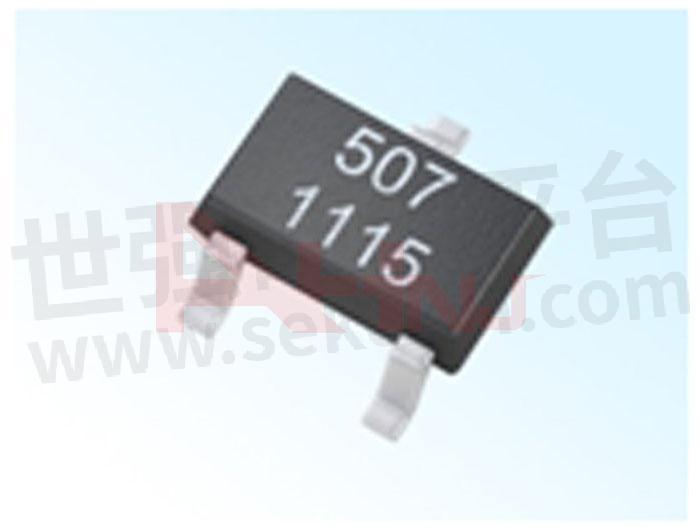Let’s Know about The Hall Effect Magnetic Sensor

In this news, let’s know about the Hall IC more systematically.
The output voltage, also known as the Hall voltage, (VH) of this fundamental Hall Element is directly proportional to the strength of the magnetic field passing through the semiconductor material (output ∝ H). This output signal voltage can be very small, just a few microvolts even if exposed to strong magnetic fields so many commercially accessible Hall effect devices are produced with built in DC amplifiers, logic switching circuits and voltage regulators to enhance the detectors sensitivity, hysteresis and output voltage. Additionally, this makes it possible for the Hall effect sensor to function within a larger variety of power supplies and magnetic field requirements.

Hall Effect Sensors are devices that are triggered by an external magnetic field. We all know that a magnetic field has two major features original density, (B) and polarity (North and South Poles). The output in the Hall effect sensor is the purpose of magnetic field density across the machine. When the magnetic flux density around the detector exceeds a specific pre-set threshold, the sensor detects it and creates an output voltage known as the Hall Voltage, VH.
Hall Effect Sensors can be found with either linear or electronic outputs. The output for terminal (analogue) detectors is taken straight from the output of the operational amplifier using the output signal voltage being directly connected to the magnetic field passing through the Hall sensor.
- +1 Like
- Add to Favorites
Recommend
- What Should You Know About Hall Effect Sensors?
- Can Hall Effect Sensor Be Used for Magnetic Field Measurement?
- SLKOR SLSS451A-9 Hall effect sensor: Stable and Reliable Multifunctional Components
- Where Are Hall Effect Sensors Used?
- How to Measurement Hall Effect Sensor?
- SLKOR SLOH49E-9 Hall Effect Sensor with an Extensive Temperature Range from -40℃ to 150℃ and Two Package Forms, T092 and SOT23
- Hall Effect Sensors- Which Is Best for Your Design?
- SLKOR Hall Sensor SL1619SH: The Extensive Application of Multifunctional Hall Sensors in Modern Life
This document is provided by Sekorm Platform for VIP exclusive service. The copyright is owned by Sekorm. Without authorization, any medias, websites or individual are not allowed to reprint. When authorizing the reprint, the link of www.sekorm.com must be indicated.





























































































































































































































































































































































































































































































































































































































































































































































































































































































